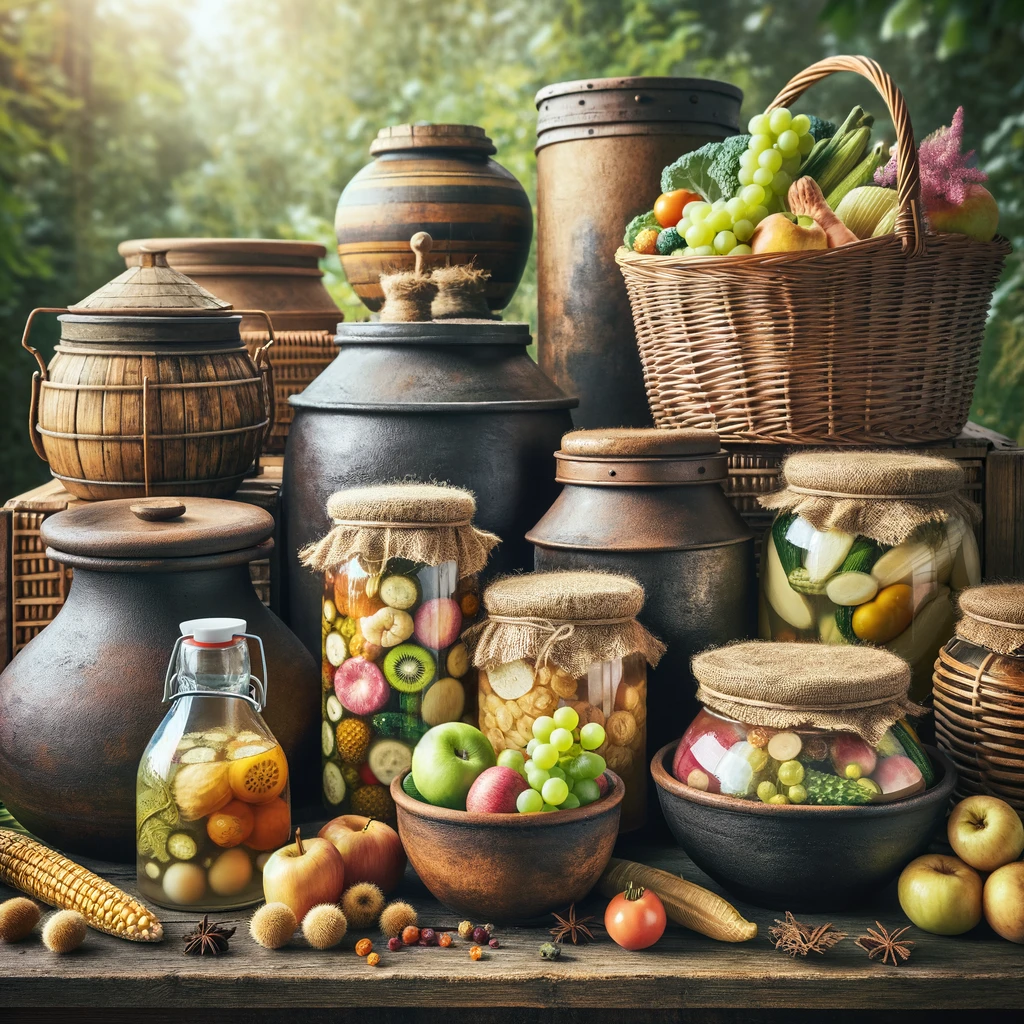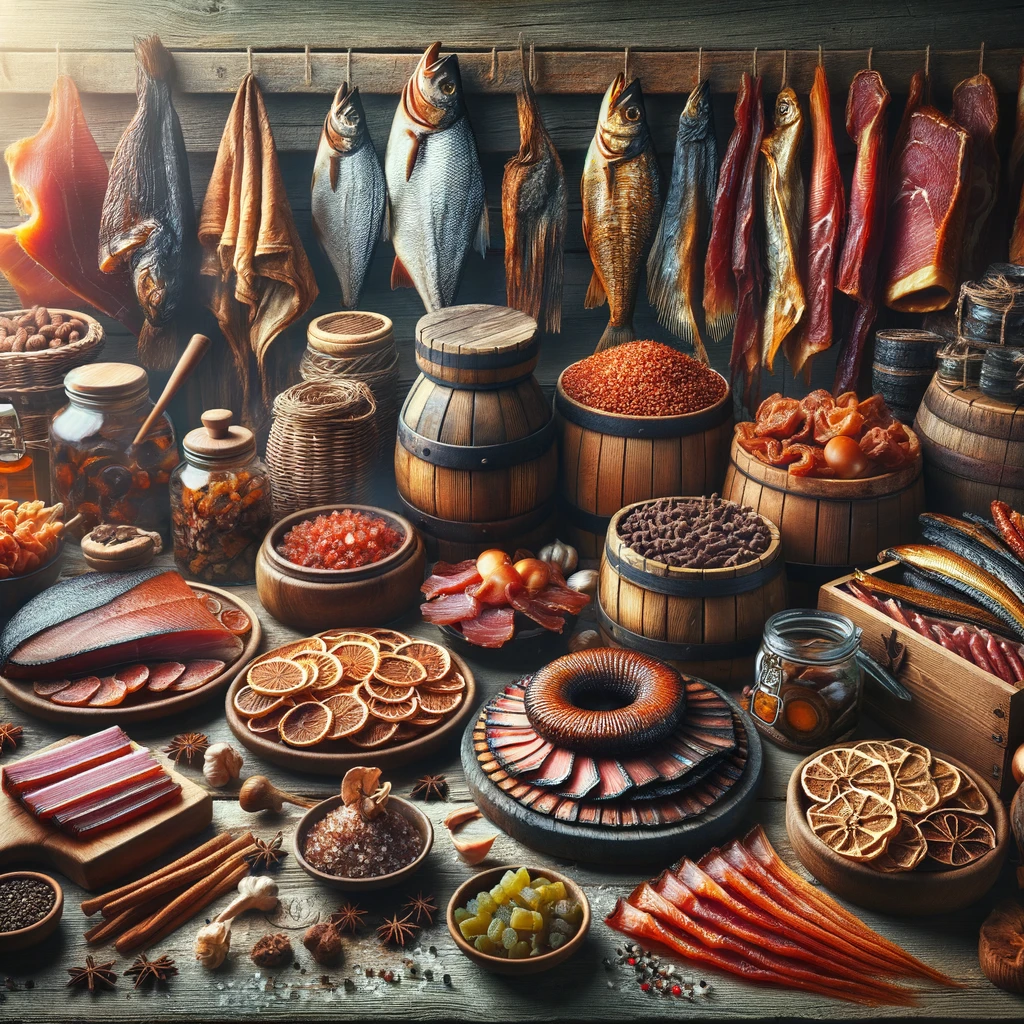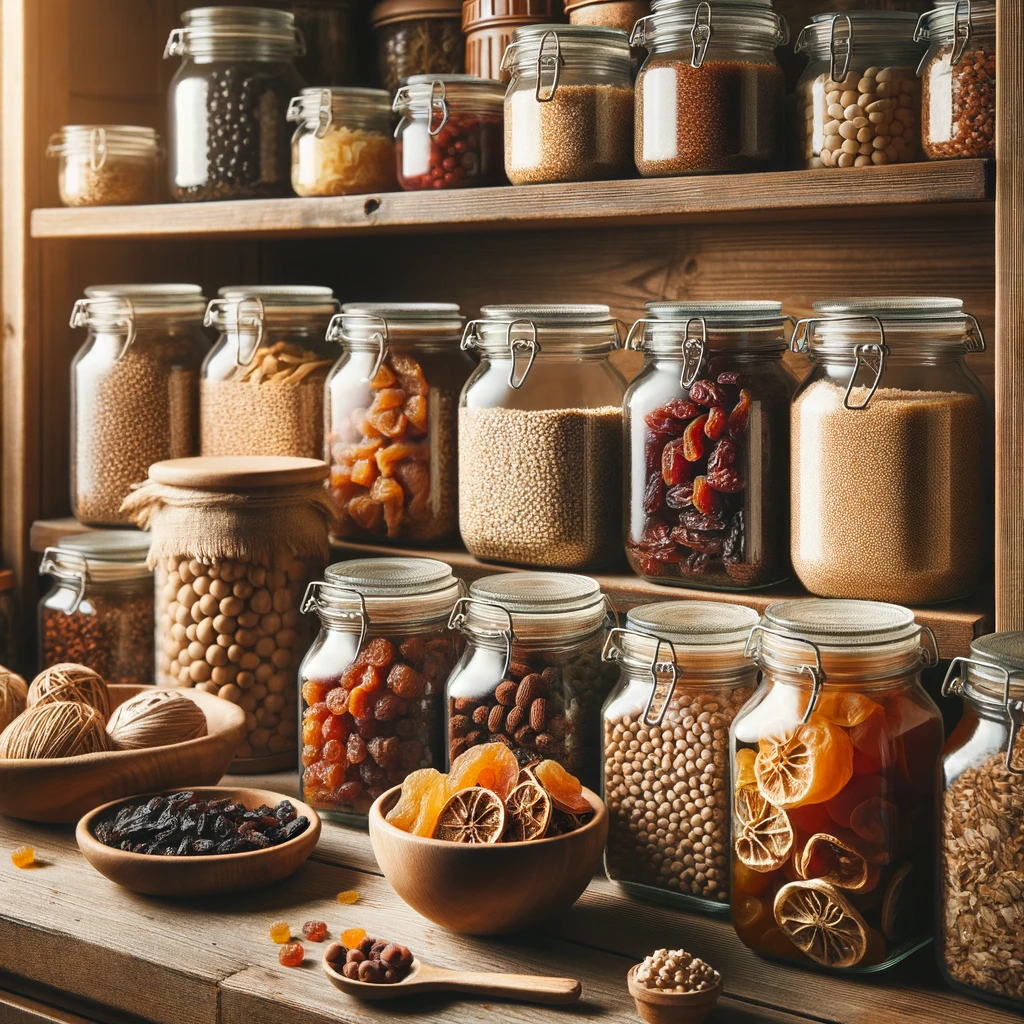Discover the forgotten treasures of The Lost Superfoods – ancient wisdom, sustainable living, and long-lasting nourishment for modern times.
Introduction
In a world where food sustainability is becoming an increasingly pressing issue, the concept of lost superfoods offers a glimpse into the past to guide us towards a more eco-friendly food future. Imagine foraging for food in ancient times, relying on nature’s bounty and ingenuity to sustain oneself through cultural food preservation methods.
These lost superfoods represent not just survival food storage but also a connection to our roots, showcasing the wisdom of our ancestors in finding ways to ensure long-term food availability. When we delve into the realm of lost superfoods, we uncover a treasure trove of knowledge that spans ancient dietary practices and survivalist nutrition.
These foods were not just about sustenance but about thriving in harmony with nature, making use of fermentation techniques and traditional food techniques that have stood the test of time. The notion of emergency food supply takes on new meaning when we embrace the idea of stocking our pantry with prepper pantry essentials inspired by these forgotten gems.
By incorporating healthy shelf-stable meals into our diet, we not only prepare for disasters but also adopt sustainable eating habits that honor both our bodies and the planet. As we embark on this journey through the world of lost superfoods, we are reminded of the importance of natural food preservation and non-refrigerated foods in creating resilient communities.
From homesteading food supplies to disaster preparedness foods, these ancient treasures offer us a roadmap towards self-sufficiency and resilience in an uncertain world. Let us explore together the wonders of these forgotten delicacies and rediscover the joy of connecting with our food in ways that nourish not just our bodies but also our souls.
Table of Contents
Top 10 Long-Lasting Foods from The Lost SuperFoods You Need to Know
Long before refrigeration or modern food preservation methods, ancient civilizations relied on natural food preservation techniques to ensure their survival. From fermenting to drying, these cultural methods have stood the test of time and continue to provide us with valuable insights into sustainable eating habits and long-term food storage. When it comes to building your prepper pantry essentials or stocking up on emergency food supplies, it’s essential to look back at these traditional food techniques for inspiration.
One of the top long-lasting foods from the lost superfoods that you need to know is pemmican. This traditional survival food is made from a mixture of dried meat, fat, and berries, providing a high-energy source that can sustain you in times of need.
Pemmican has been used for centuries by indigenous peoples and explorers alike, making it a staple in disaster preparedness foods. Its durability and nutrient density make it an excellent choice for those looking to create a sustainable eating plan with eco-friendly food choices.
Another hidden gem among The lost superfoods is hardtack, a simple but effective shelf-stable meal that has been used by sailors and soldiers throughout history. Made from flour, water, and salt, hardtack is baked into dense biscuits that can last for years when stored properly.
This survivalist nutrition staple may not be the most flavorful option, but its longevity and versatility make it an invaluable addition to any emergency food supply. By embracing these ancient dietary practices and exploring non-refrigerated foods like pemmican and hardtack, we can learn how to better prepare for unforeseen circumstances while reducing our reliance on modern conveniences.
How to Store Your Foods Without Refrigeration: Tips from The Lost SuperFoods
When it comes to storing your foods without the need for refrigeration, there are several tips and techniques that can help you make the most of The Lost Superfoods. One key aspect of food sustainability is natural food preservation methods that have been passed down through generations.
By learning how to properly store foods using traditional techniques, you can ensure a long-term food supply that doesn’t rely on modern refrigeration. Long-term food storage is essential when considering shelf-stable recipes inspired by ancient dietary practices.
Cultural food preservation methods offer a wealth of knowledge on how different societies have historically stored their foods without the need for refrigeration. For those interested in survivalist nutrition or prepper pantry essentials, understanding how to keep non-refrigerated foods fresh and edible is crucial for emergency food supply and disaster preparedness.
By exploring homesteading food supplies and eco-friendly food choices, you can create an efficient system for storing shelf-stable meals that align with sustainable eating habits. Additionally, incorporating fermentation techniques into your food preservation arsenal can not only extend the shelf life of your foods but also enhance their flavor and nutritional value.

The Science Behind Preservation: Insights from The Lost SuperFoods
When we dig into the science behind preservation methods used in The Lost SuperFoods, we uncover a treasure trove of wisdom passed down through generations. One of the key insights is the use of natural food preservation techniques such as fermentation.
Ancient dietary practices recognized the power of fermentation not only in extending the shelf life of foods but also in enhancing their nutritional value. By harnessing the power of beneficial bacteria, our ancestors were able to create eco-friendly food choices that provided vital nutrients and probiotics.
Another fascinating aspect is the use of traditional food techniques that focus on sustainable eating habits. Cultural food preservation methods have long emphasized utilizing every part of an ingredient to minimize waste and maximize nutrition.
Foraging for food played a significant role in ensuring communities had access to diverse sources of sustenance, a practice that aligns with modern concepts of food sustainability. By understanding these historical practices, we can learn valuable lessons on how to build a prepper pantry filled with healthy shelf-stable meals that are both nourishing and enduring.
Survival Foods That Can Last a Lifetime: Lessons from The Lost SuperFoods
When it comes to survival foods that can last a lifetime, the lessons we can learn from The Lost Superfoods are invaluable. These foods are not only rich in nutrients but also have the remarkable ability to stand the test of time without the need for refrigeration.
Imagine having a pantry stocked with healthy shelf-stable meals that can sustain you through any emergency or disaster. The Lost Superfoods offer us a glimpse into a world where food sustainability was not just a trend but a way of life.
One of the key aspects we can glean from these ancient dietary practices is the importance of eco-friendly food choices and sustainable eating habits. By incorporating long-term food storage methods inspired by The Lost Superfoods, we can minimize food waste and reduce our carbon footprint.
Cultural food preservation methods such as fermentation techniques and natural food preservation play a crucial role in ensuring that our emergency food supply remains fresh and nutritious for an extended period. By embracing these traditional food techniques, we not only enhance the flavor and nutritional value of our homesteading food supplies but also connect with our roots in a meaningful way.
Ancient Foods for the Modern Table: Rediscovering The Lost SuperFoods
In our fast-paced, modern world, it’s easy to overlook the bounty of ancient foods that our ancestors relied on for sustenance. Rediscovering these lost superfoods not only connects us to our culinary roots but also offers a treasure trove of flavors and nutrients waiting to be explored. From nutrient-dense seeds like chia and quinoa to versatile grains like amaranth and teff, ancient foods have stood the test of time for good reason.
For those looking to incorporate these ancient foods into their modern diet, there are endless possibilities. Quinoa can be used as a base for hearty salads or as a gluten-free substitute for rice in stir-fries.
Chia seeds are perfect for adding a nutritional boost to smoothies or oatmeal, thanks to their high omega-3 fatty acid content. Teff flour can be used in baking projects, lending a nutty flavor and hearty texture to bread and muffins.
By embracing these ancient ingredients, we not only diversify our diet but also support sustainable eating habits by reducing our reliance on mass-produced, environmentally taxing food sources. As we delve into the realm of ancient foods for the modern table, it’s essential to approach this culinary journey with an open mind and a willingness to experiment.
Whether you’re exploring new shelf-stable recipes or incorporating traditional food techniques into your cooking repertoire, each bite is an opportunity to honor the rich tapestry of cultural food preservation methods that have sustained humanity for centuries. By prioritizing eco-friendly food choices and seeking out sustainable eating habits rooted in history, we not only nourish our bodies but also pay homage to the wisdom of generations past who understood the value of natural food preservation techniques for long-term food storage needs.
Making the Most of The Lost SuperFoods: Easy Recipes for Every Home
When it comes to making the most of The Lost SuperFoods, easy recipes for every home can truly elevate your culinary experience while embracing sustainable eating habits. One delicious way to incorporate these ancient ingredients is by preparing a hearty stew using long-term food storage staples like beans, grains, and dried herbs. By combining these shelf-stable items with fresh vegetables and broth, you can create a nourishing meal that not only satisfies your taste buds but also provides essential nutrients for your body.
Fermentation techniques offer another avenue for exploring the potential of The Lost SuperFoods in your kitchen. Try fermenting cabbage, carrots, and other vegetables using natural food preservation methods to make tangy sauerkraut or kimchi.
These probiotic-rich options not only support gut health but also showcase how cultural food preservation methods can transform ordinary ingredients into extraordinary dishes. Incorporating fermented foods into your diet is not only a delicious way to boost your immune system but also a nod to ancient dietary practices that have stood the test of time.

Eating Healthy with Shelf-Stable Foods: A Guide Inspired by The Lost SuperFoods
When it comes to eating healthy with shelf-stable foods inspired by The Lost SuperFoods, it’s all about finding that perfect balance between taste, nutrition, and sustainability. Let’s start with the basics of building your emergency food supply or prepper pantry essentials. You want to have a good mix of items that can last a long time without refrigeration but still provide the necessary nutrients your body needs.
Think about including staples like dried beans, whole grains, canned fish or meats, and preserved fruits and vegetables. These items are not only great for disaster preparedness but also for everyday sustainable eating habits.
Survivalist nutrition doesn’t have to be bland or boring. With a little creativity in the kitchen and some knowledge of traditional food techniques like fermentation, you can whip up delicious shelf-stable recipes that will keep both your taste buds and your body satisfied.
Consider exploring ancient dietary practices from different cultures to add variety and depth to your meals. From foraging for food in the wild to experimenting with natural food preservation methods like pickling or drying, there are endless possibilities when it comes to creating healthy shelf-stable meals that honor both the past and the future of food sustainability.
Emergency Preparedness: Stocking Up with The Lost SuperFoods
When it comes to emergency preparedness, stocking up with The Lost SuperFoods can be a game-changer. Long-term food storage is essential for ensuring you have a reliable source of sustenance during times of crisis.
By incorporating survival food storage techniques into your pantry, you can rest assured that you and your family will have access to nourishing meals when needed most. Foraging for food is a skill that has been practiced for centuries and can be invaluable in emergency situations.
Learning about prepper pantry essentials and incorporating them into your emergency food supply can greatly enhance your self-sufficiency. By understanding ancient dietary practices and homesteading food supplies, you can create a diverse and sustainable emergency food stockpile that will keep you well-fed during challenging times.
Cultural food preservation methods offer unique insights into how different societies have sustained themselves over generations, providing inspiration for your own disaster preparedness foods. Food preservation is key to building an effective emergency supply, and familiarizing yourself with natural food preservation techniques can significantly extend the shelf life of your supplies.
Whether through fermentation techniques or traditional food preservation methods, there are numerous ways to ensure you have access to healthy shelf-stable meals even without refrigeration. By embracing sustainable eating habits and eco-friendly food choices in your emergency preparations, you not only safeguard yourself but also contribute to a more resilient and environmentally conscious community.
From Foraging to Fermenting: Traditional Techniques from The Lost SuperFoods
From foraging to fermenting, traditional techniques play a crucial role in preserving the lost superfoods that have sustained generations of our ancestors. Foraging for food has been a time-honored practice ingrained in our cultural heritage, where individuals would venture into the wilderness to gather nature’s bounty. By identifying edible plants and learning about their nutritional benefits, foragers were able to harvest food directly from the earth, creating a sustainable source of nourishment.
Fermentation techniques have also been an essential part of preserving foods without refrigeration for centuries. Through the process of natural fermentation, foods like vegetables, fruits, and dairy could be transformed into flavorful and nutrient-rich products that could last for extended periods.
This method not only helped in extending the shelf life of perishable items but also added probiotics and beneficial enzymes to enhance gut health. By harnessing the power of fermentation, our ancestors were able to create a diverse array of preserved foods that provided sustenance during times of scarcity or as emergency food supplies for leaner seasons.
Why The Lost SuperFoods Are Essential for Sustainable Living
Why The Lost SuperFoods Are Essential for Sustainable Living The concept of sustainability isn’t just a buzzword; it’s a way of life that encompasses everything from the food we eat to how we preserve it.
The lost superfoods play a crucial role in sustainable living because they offer us a glimpse into the past, where people relied on traditional food techniques and cultural food preservation methods to ensure their survival. By incorporating these ancient dietary practices into our modern lives, we not only connect with our roots but also contribute to food sustainability in a meaningful way.
One key aspect of why the lost superfoods are essential for sustainable living is their ability to provide long-term food storage without the need for refrigeration. In today’s fast-paced world, where convenience often takes precedence over health and environmental impacts, having a well-stocked prepper pantry filled with healthy shelf-stable meals is a game-changer.
These non-refrigerated foods not only offer us peace of mind in times of uncertainty but also serve as an eco-friendly alternative to heavily processed, perishable items. By mastering traditional food techniques like fermentation and exploring shelf-stable recipes inspired by our ancestors, we can take small yet impactful steps towards sustainable eating habits that benefit both ourselves and the planet.

Uncovering The Lost SuperFoods: A Journey Through History and Culture
As we delve into the fascinating journey through history and culture to uncover the lost superfoods, we are met with a tapestry of diverse traditions and practices that have sustained communities for generations. From ancient dietary practices rooted in survivalist nutrition to modern-day sustainable eating habits, the evolution of food preservation techniques offers a rich tapestry of knowledge waiting to be unraveled. One of the most intriguing aspects is how different cultures have developed their unique methods for preserving food without the need for refrigeration.
From traditional fermentation techniques employed by homesteaders to innovative shelf-stable recipes passed down through generations, each community has its own set of prepper pantry essentials that ensure survival in times of need. Exploring these non-refrigerated foods opens a window into the resourcefulness and ingenuity of our ancestors, who understood the importance of long-term food storage for ensuring resilience in times of scarcity.
Moreover, foraging for food has been a vital part of many cultures’ culinary traditions, highlighting the deep connection between humans and nature. By understanding cultural food preservation methods that have sustained communities through centuries, we gain insight into the wisdom embedded in these practices.
The fusion of ancient wisdom with modern-day knowledge allows us to embrace eco-friendly food choices that promote food sustainability while honoring our heritage. Through uncovering these lost superfoods and traditional food techniques, we not only nourish our bodies but also nourish our souls with a deeper appreciation for the interconnectedness between culture, history, and nutrition.
Conclusion
As we wrap up our exploration of The Lost SuperFoods, it’s clear that these ancient dietary practices hold a wealth of knowledge and wisdom that can benefit us in the modern world. By delving into cultural food preservation methods and fermentation techniques, we’ve uncovered a treasure trove of shelf-stable recipes and sustainable eating habits that can sustain us through any situation.
From survival food storage to disaster preparedness foods, we’ve learned the importance of having an emergency food supply that is not only nutritious but also eco-friendly. In today’s fast-paced world, where convenience often trumps sustainability, embracing the principles of natural food preservation and traditional food techniques can be a grounding force.
By adopting some of these long-term food storage strategies into our daily lives, whether it’s through foraging for food or stocking up on prepper pantry essentials, we are not only ensuring our own well-being but also contributing to the greater good of food sustainability. So let’s take this journey with us beyond these words and into our kitchens, gardens, and communities as we strive to live harmoniously with the earth while nourishing ourselves with the timeless wisdom of The Lost SuperFoods.
If you enjoyed this article you might want to check out an article on 500 Keto Recipes below.



